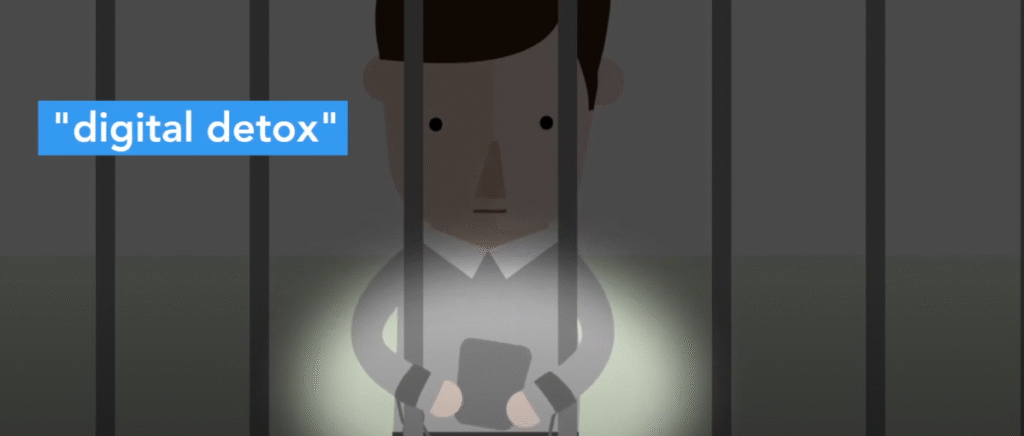Digital Detox: Why Taking Breaks from Screens is Essential
In today’s world, screens are everywhere. We use them for work, studies, shopping, entertainment, and even staying in touch with family and friends. From the moment we wake up to the time we sleep, many of us spend hours looking at phones, laptops, or TVs. While technology makes life easier, too much screen time is harmful for both body and mind.
This is where a digital detox—taking regular breaks from screens—becomes important. A detox does not mean leaving technology forever. Instead, it is about finding the right balance so that technology helps us without harming our health.
What is Digital Detox?
A Digital Detox means taking a break from using digital devices like smartphones, computers, tablets, and TVs for a certain period of time.
The purpose is to reduce stress, improve focus, and give your mind and body rest from constant screen exposure.
It doesn’t mean completely avoiding technology forever—it’s about finding balance. For example:
-
Not using your phone during meals.
-
Spending an evening without social media.
-
Taking a weekend off from screens to relax in nature.
In simple words: Digital detox is giving yourself a break from screens to feel healthier and more present in real life.
Effects of Too Much Screen Time
Spending long hours on screens can affect the body in many ways.
Eye Strain
Looking at screens for too long causes tired, dry eyes. Many people complain of blurred vision or headaches after working on laptops or scrolling on phones for hours.
Example: Office workers who stare at spreadsheets all day often experience eye strain, also known as “computer vision syndrome.”
Stress and Fatigue
Constant notifications, emails, and online meetings can make people feel stressed. Too much information overload also leaves the brain tired.
Example: Students studying online for long hours may feel more exhausted than if they were learning in a classroom.
Bad Posture and Physical Pain
When people bend over phones or sit at computers without breaks, it causes back, neck, and shoulder pain. Over time, this poor posture can become a serious health problem.
Mental Health Impact
Screens affect not only the body but also the mind.
Anxiety and Restlessness
Social media often shows a “perfect life” of others. Comparing yourself with these images can lead to anxiety, low confidence, and restlessness.
Example: A teenager spending hours on Instagram may feel unhappy about their own life after seeing edited photos of celebrities or influencers.
Social Isolation
Ironically, being “always connected” online can make people feel lonely in real life. Too much time on screens reduces face-to-face interactions with family and friends.
Sleep Problems
Using screens late at night affects sleep quality. The blue light from phones and laptops confuses the brain into thinking it is still daytime, making it harder to fall asleep.
Example: Many people who scroll through TikTok or watch Netflix before bed complain about not being able to sleep on time.
Practical Digital Detox Tips
A digital detox does not mean throwing away your phone. It means using technology more mindfully. Here are some easy tips:
Set Screen-Free Hours
Choose certain hours in the day where you avoid screens completely. For example, the first hour after waking up or the last hour before bed.
Spend Time in Nature
Walking in a park, gardening, or simply sitting outdoors helps relax the mind and gives the eyes a break from artificial light.
Rediscover Offline Hobbies
Reading a physical book, painting, cooking, or playing sports are great alternatives to endless scrolling.
Use “Do Not Disturb” Mode
Turn off unnecessary notifications so you are not tempted to check your phone every few minutes.
Example: A young professional who sets their phone aside during meals often feels more present and enjoys food better.
Balancing Work and Tech Use
For many people, completely avoiding screens is impossible because their work depends on them. But balance is possible.
Follow the 20-20-20 Rule
Every 20 minutes, look at something 20 feet away for at least 20 seconds. This relaxes the eyes and prevents strain.
Take Small Breaks
Stand up, stretch, or walk for a few minutes every hour. This improves posture and blood circulation.
Be Mindful of Screen Purpose
Use screens with intention. If you open your laptop for work, avoid drifting into social media. If you pick up your phone to call someone, don’t get lost in endless scrolling.
Example: A graphic designer who sets timers for work sessions can stay productive while also giving their mind breaks between tasks.
Conclusion
Technology is an amazing tool, but too much screen time comes with a cost. From eye strain and poor posture to anxiety and sleep problems, the effects are real. A digital detox does not mean rejecting technology—it means using it wisely.
By setting screen-free hours, enjoying offline activities, and being mindful about tech use, we can build a healthy balance. In the modern world, where screens are part of daily life, finding this balance is the key to long-term health and happiness.
FAQs
Q1: What is a digital detox?
A digital detox means taking regular breaks from screens like phones, laptops, and TVs to improve mental and physical health.
Q2: How long should a digital detox last?
It depends. Some people take a few hours daily, others take full weekends or vacations without screens. Even short breaks help.
Q3: Does reducing screen time really improve sleep?
Yes. Avoiding screens at least one hour before bed helps the brain release melatonin, making it easier to sleep.
Q4: Can I do a digital detox if my job needs screens?
Yes. You can’t avoid screens completely, but you can take breaks, follow healthy posture, and limit non-work screen time.
Q5: What are simple activities to replace screen time?
Reading, cooking, exercising, playing board games, or spending time outdoors are great options.


